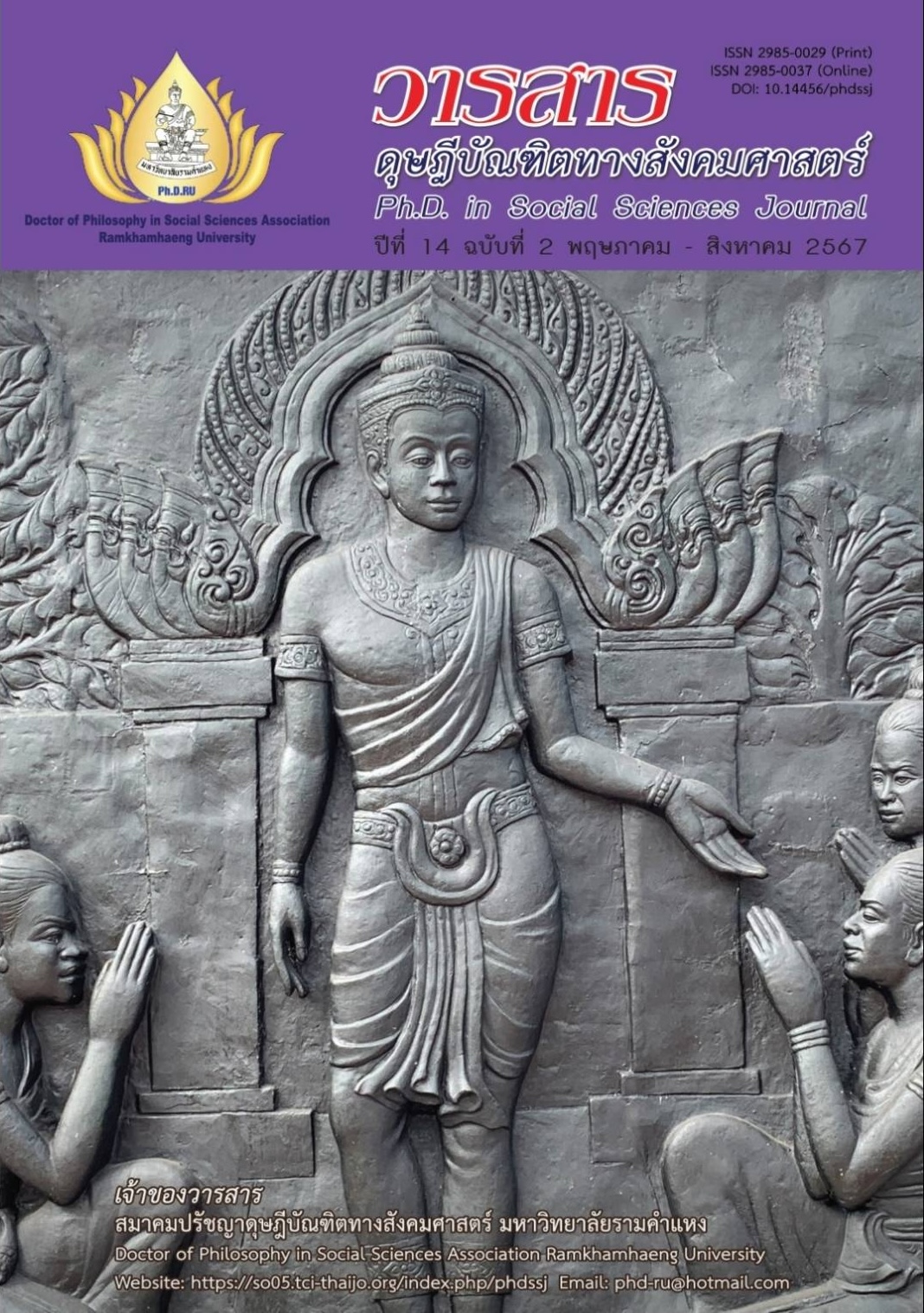Transparent Communication During Change and Openness to Change as Series Mediating Effect Between Transformational Leadership to Employee Creation
Main Article Content
Abstract
This research article aims to study (1) To study the relationship between transformational leadership, Transparent communication during change, Openness to change and creativity of employees in small and medium-sized enterprises and (2) To test transparent communication during change and openness to change as serial mediating variables linking transformational leadership to employee creativity in SMEs. The researchers used quantitative method to 573 employees in the food and beverage business in Bangkok and analyzed by descriptives statistics mean, percentage, SD and inferential statistics Structural Equation Model analysis.
Findings are as follows: (1) revealed that the factor most affecting employee creativity was transformational leadership (TE = 0.546) followed by Openness to change (TE = 0.347) and transparent communication during change (TE = 0.326) respectively and (2) Transparent communication during change and openness to change are serial mediating effect between transformational leadership to employee creativity (indirect effect = 0.084).
Article Details

This work is licensed under a Creative Commons Attribution-NonCommercial-NoDerivatives 4.0 International License.
Academic articles, research articles, and book reviews in the Ph.D. in Social Sciences Journal are author’s opinions, and not the publisher’s, and is not the responsibility of the Ph.D. in Social Sciences Journal Philosophy Association, Ramkhamhaeng University. (In the case that research is done on human, the researcher has to be trained in Ethics for Doing Research on Human Training and has to produce the evidence of the training).
References
Anser, M. K., Yousaf, Z., Sharif, M., Yijun, W., Majid, A., & Yasir, M. (2022). Investigating employee creativity through employee polychronicity and employee resilience: A glimpse of nurses working in the health-care sector. European Journal of Innovation Management, 25(1), 39-54.
Avolio, B. J., & Bass, B. M. (1995). Individual consideration viewed at multiple levels of analysis: A multi-level framework for examining the diffusion of transformational leadership. The Leadership Quarterly, 6(2), 199-218.
Burnes, B. (2004). Managing change: A strategic approach to organizational dynamics (4th ed.). Prentice Hall.
Cohen, J. (1992). A power primer. Psychological Bulletin, 112(1), 155-159.
Comrey, A. L., & Lee, H. B. (1992). A first course in factor analysis (2nd ed.). Lawrence Erlbaum Associates.
Fornell, C., & Larcker, D. F. (1981). Evaluating structural equation models with unobservable variables and measurement error. Journal of Marketing Research, 18(1), 39-50.
Gelaidan, H. M., Al-Swidi, A. K., & Al-Hakimi, M. A. (2023). Servant and authentic leadership as drivers of innovative work behaviour: the moderating role of creative self-efficacy. European Journal of Innovation Management, 27(6), 1938-1966.
Gill, R. (2002). Change management or change leadership?. Journal of Change Management, 3(4), 307-318.
Hair, J. F., Black, W. C., Babin, B. J., Anderson, R. E., & Tatham, R. L. (2006). Multivariate data analysis (6th ed.). Prentice Hall.
Hayes, N. (2013). Doing qualitative analysis in psychology. Psychology Press.
Jiang, H., & Luo, Y. (2018). Crafting employee trust: from authenticity, transparency to engagement. Journal of Communication Management, 22(2), 138-160.
Jiang, H., & Men, R. L. (2017). Creating an engaged workforce: The impact of authentic leadership, transparent organizational communication, and work-life enrichment. Communication Research, 44(2), 225-243.
Judge, T. A., & Piccolo, R. F. (2004). Transformational and transactional leadership: A meta-analytic test of their relative validity. Journal of Applied Psychology, 89(5), 755-768.
Johansson, C., & Heide, M. (2008). Speaking of change: three communication approaches in studies of organizational change. Corporate Communications: An International Journal, 13(3), 288-305.
Joo, B. K., Yim, J. H., Jin, Y. S., & Han, S. J. (2023). Empowering leadership and employee creativity: the mediating roles of work engagement and knowledge sharing. European Journal of Training and Development, 47(9), 881-899.
Kalyar, M. N., Usta, A., & Shafique, I. (2020). When ethical leadership and LMX are more effective in prompting creativity: The moderating role of psychological capital. Baltic Journal of Management, 15(1), 61-80.
Liu, J., Wang, Y., & Zhu, Y. (2020). Climate for innovation and employee creativity: An information processing perspective. International Journal of Manpower, 41(4), 341-356.
Mahmood, M., Uddin, M.A., & Fan, L. (2019). The influence of transformational leadership on employees’ creative process engagement: A multi-level analysis. Management Decision, 57(3), 741-764.
Maria, A. D., Yulianto, H., Palupiningtyas, D., & Usodo, H. (2022). Relationship between transformational leadership, proactive personality, creative self-efficacy and employee creativity at food processing SMEs in Indonesia. Evidence-based HRM, 10(3), 257-274.
Mittal, S., & Dhar, R. L. (2015). Transformational leadership and employee creativity Mediating role of creative self-efficacy and moderating role of knowledge sharing. Management Decision, 53(5), 894-910.
Nielsen, K., & Randall, R. (2013). Opening the black: Presenting a model for evaluating organization-level interventions. European Journal of Work and Organizational Psychology, 22(5), 601-617.
Nili, F., & Tasavori, M. (2022). Linking an autonomy-supportive climate and employee creativity: The influence of intrinsic motivation and company support for creativity. European Business Review, 34(5), 666-688.
Parhamnia, F., Farahian, M., & Rajabi, Y. (2022). Knowledge sharing and self-efficacy in an EFL context: The mediating effect of creativity. Global Knowledge, Memory and Communication, 71(4/5), 293-321.
Rawlins, B. (2008). Give the emperor a mirror: Toward developing a stakeholder measurement of organizational transparency. Journal of Public Relations Research, 21(1), 71-99.
Yue, C. A., Men, L. R., & Ferguson, M. A. (2019). Bridging transformational leadership, transparent communication, and employee openness to change: The mediating role of trust. Public Relations Review, 45(1), 1-13.
Zainab, B., Akbar, W., & Siddiqui, F. (2021). Impact of transformational leadership and transparent communication on employee openness to change: Mediating role of employee organization trust and moderated role of change-related self-efficacy. Leadership & Organizational Development Journal, 43(1), 1-13.


